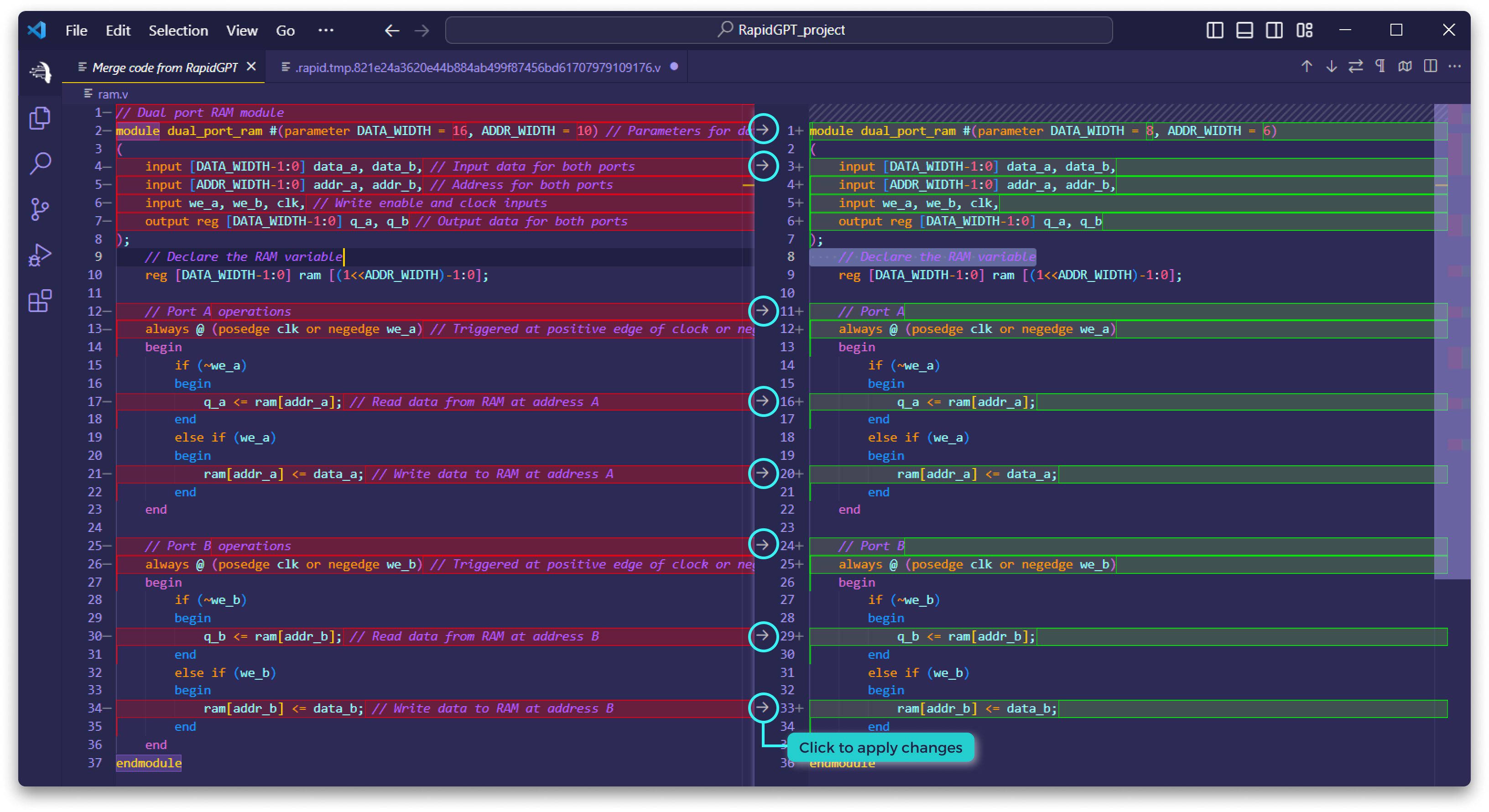Action Buttons
When HDL code is included in a RapidGPT response, it will be displayed within a nicely formatted code snippet area. This area is especially helpful as it offers three action buttons that facilitate interaction between the main editor, the chat panel, and the user.
Edit message
Simply click on the "Edit message" button. This will allow the user to modify the input prompt according to his requirements
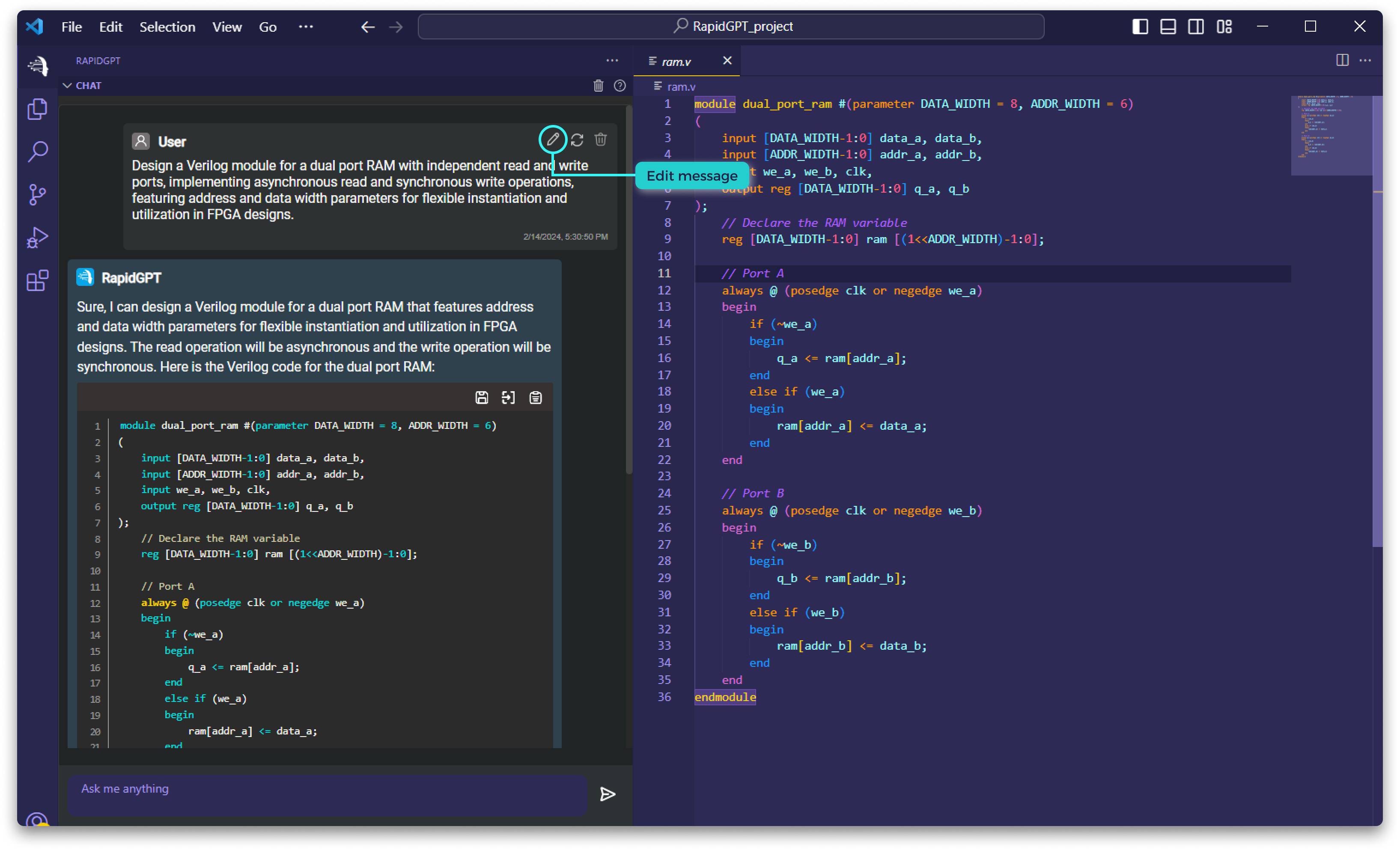
Regenerate message
To regenerate the response, click on the "Regenerate message" button. This will enable the user to generate a new response from RapidGPT.
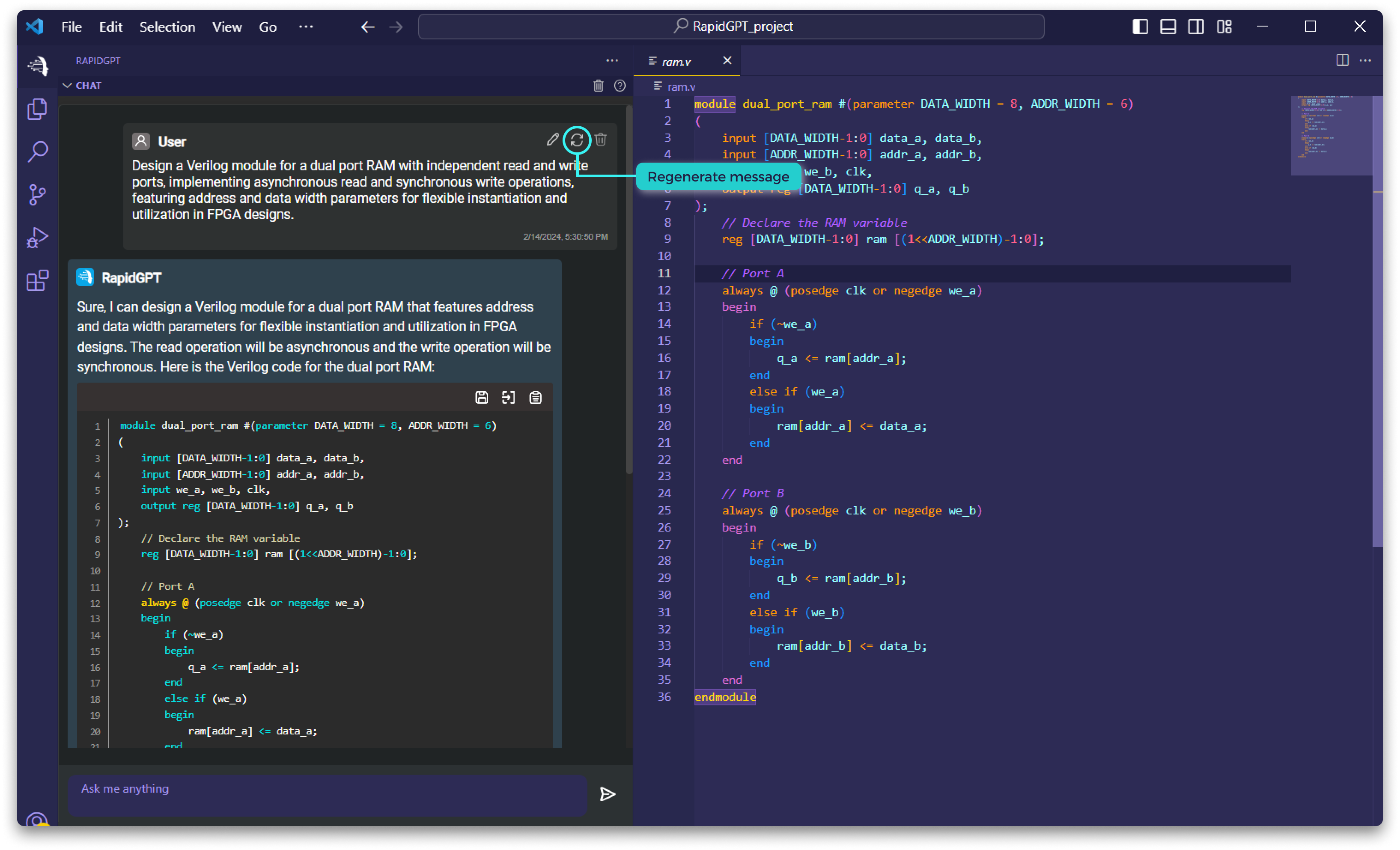
Delete this message
This action button offers a convenient way to delete specific messages directly from the user interface. This feature proves particularly handy when you need to remove certain messages from the chat history within a specific conversation.
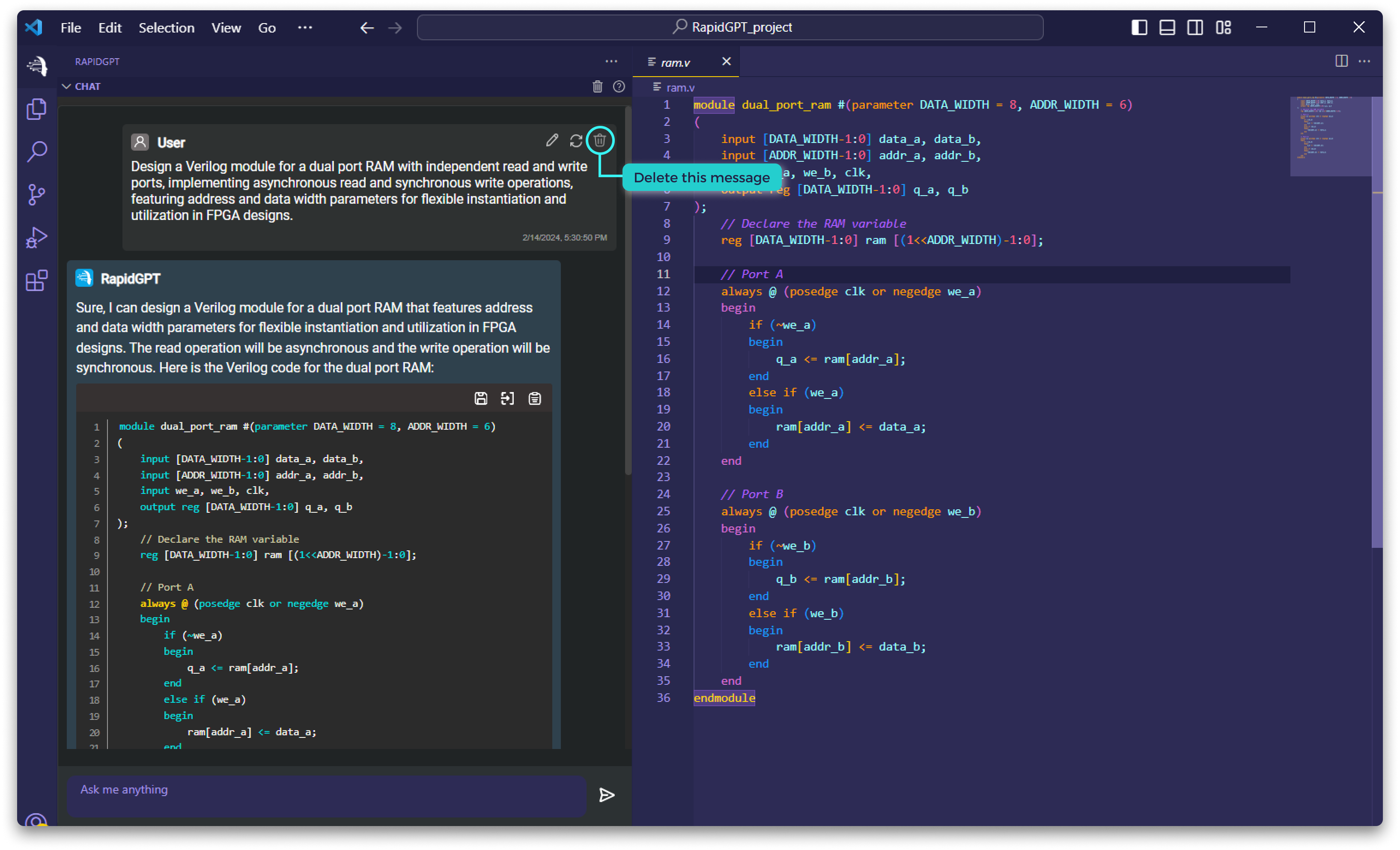
Clear Conversation
The "Clear Conversation" action button provides a convenient method for directly removing entire conversations from the user interface. This feature is particularly useful when you need to erase complete conversations from the chat history within a specific conversation thread.
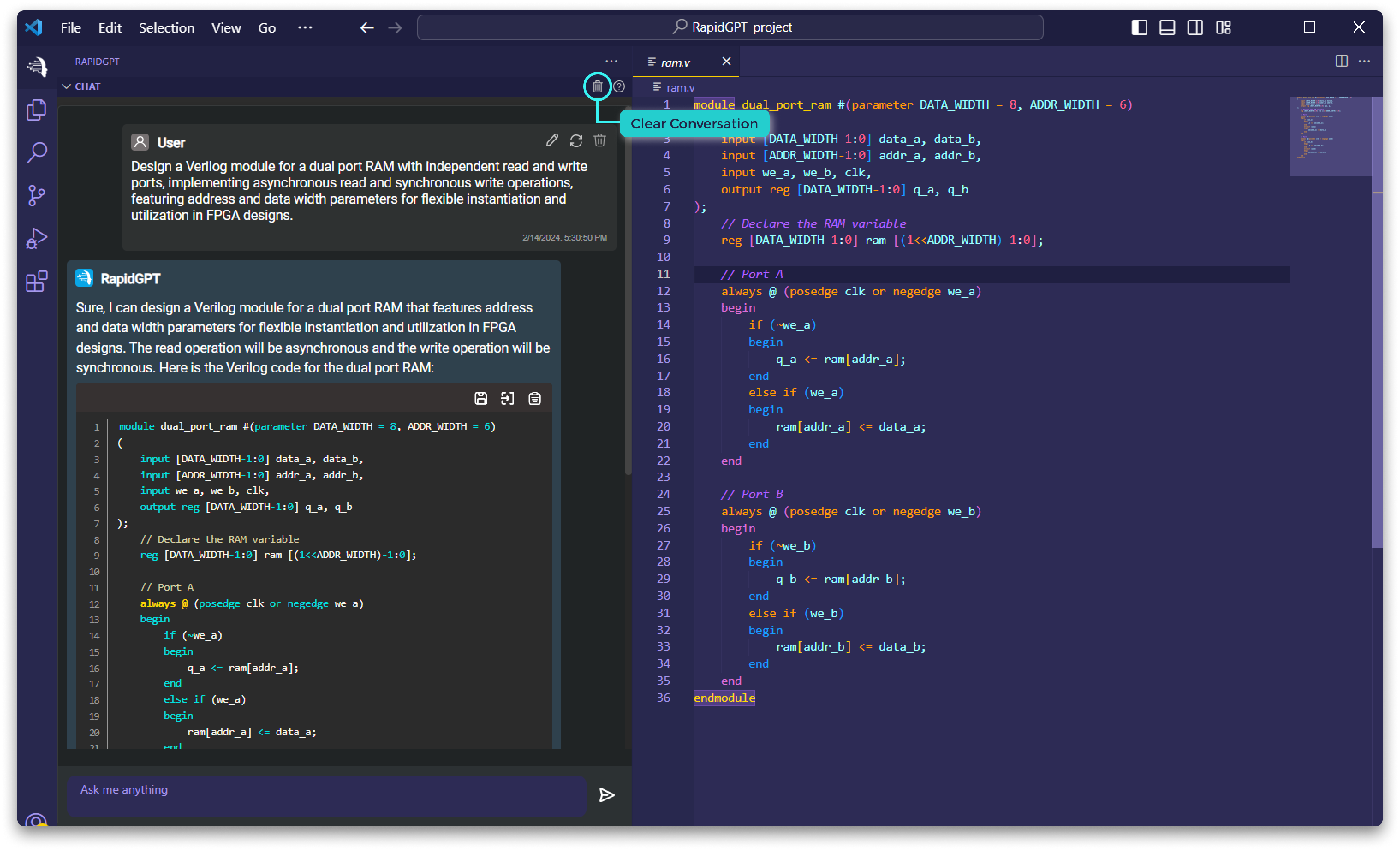
Save as New File
By pressing the "Save as new file" button, you will be prompted to choose a destination location and filename for saving the file.
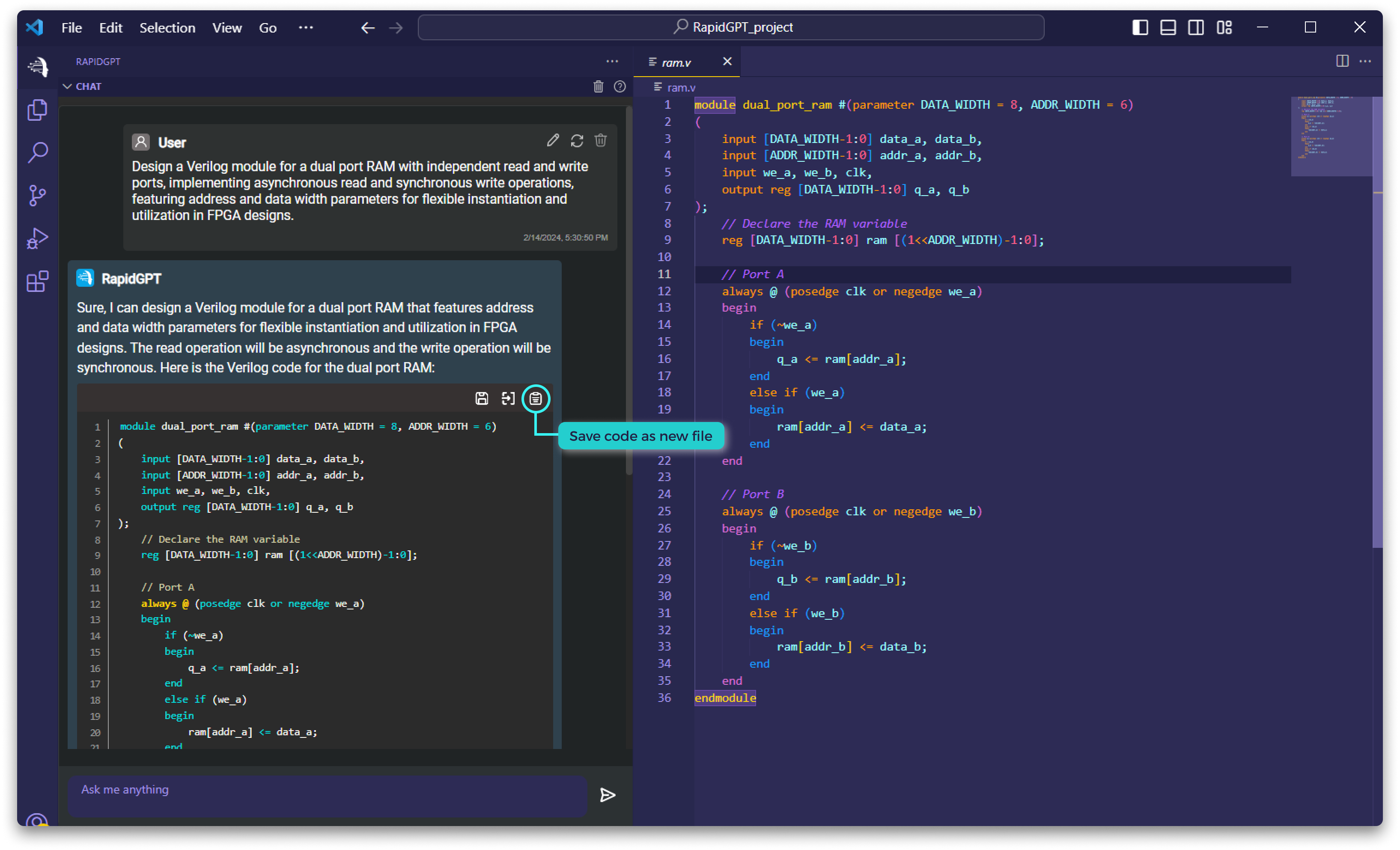
Copy to Clipboard
This action button allows you to conveniently select and copy the entire code within a code snippet area to the clipboard. This feature is especially useful when you need to quickly copy and paste code generated by RapidGPT into external third-party software, facilitating its integration.
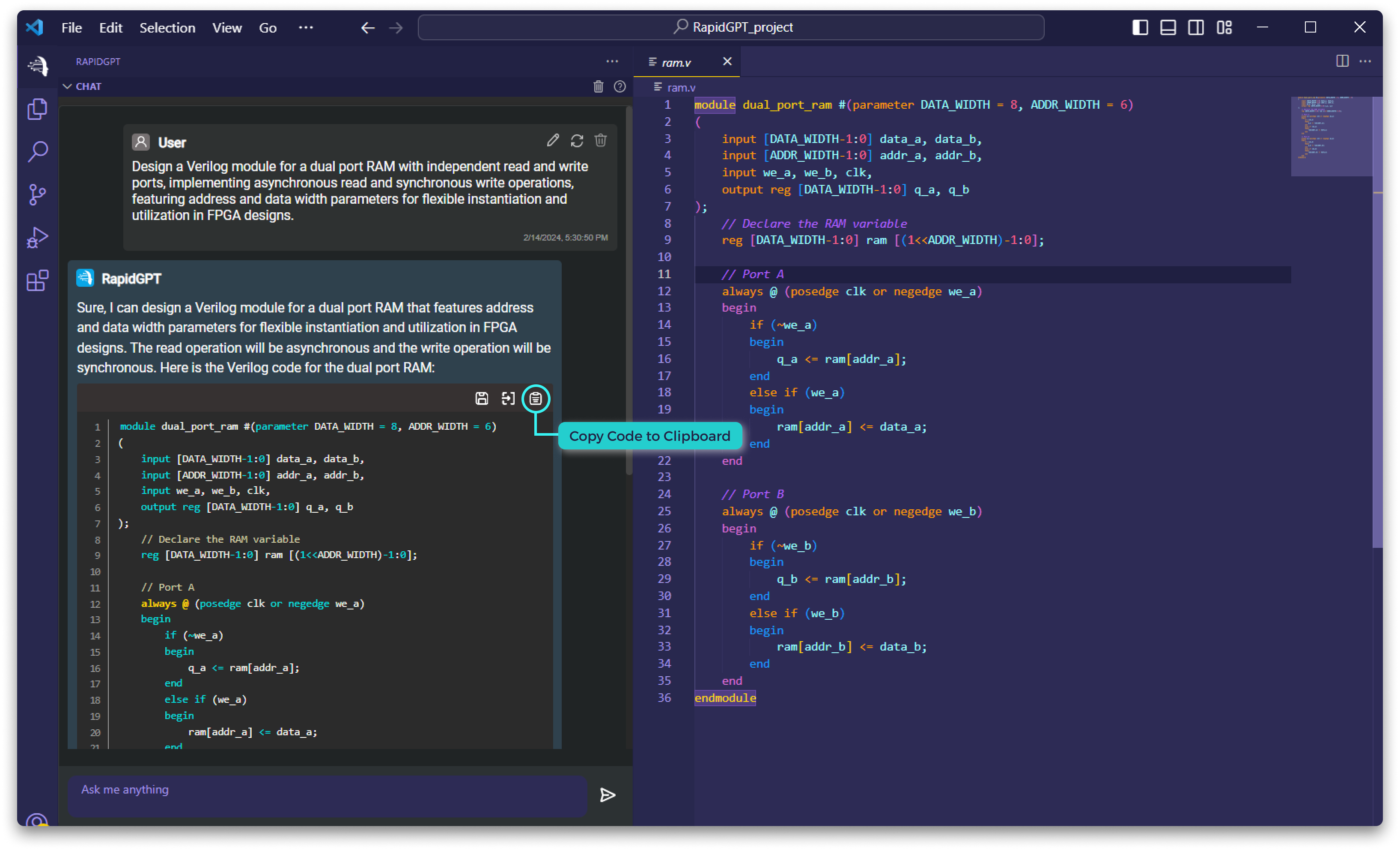
Merge Code
Tip: To take full advantage of this feature, we recommend using it within a module chat scope.
To make code merging and review easier, RapidGPT offers a convenient merge code shortcut. When you activate this shortcut, a side-by-side diff comparison screen will open, showing both the original module and the updated version. This interface is similar to the ones used by developers on platforms like GitHub.
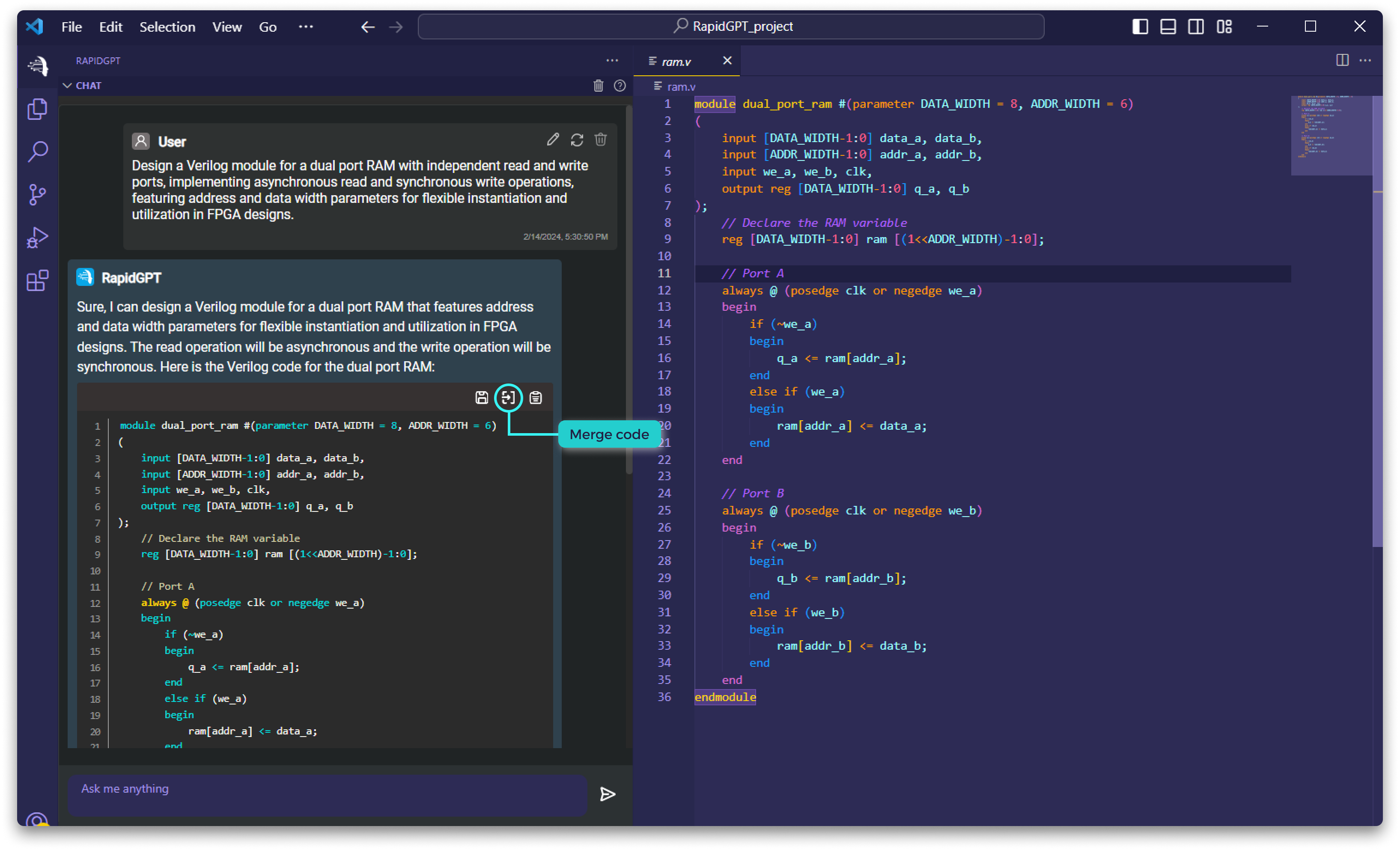
To finalize the changes, click on the arrows (i.e., Click to revert changes buttons) located on lines which correspond to suggested edits.
